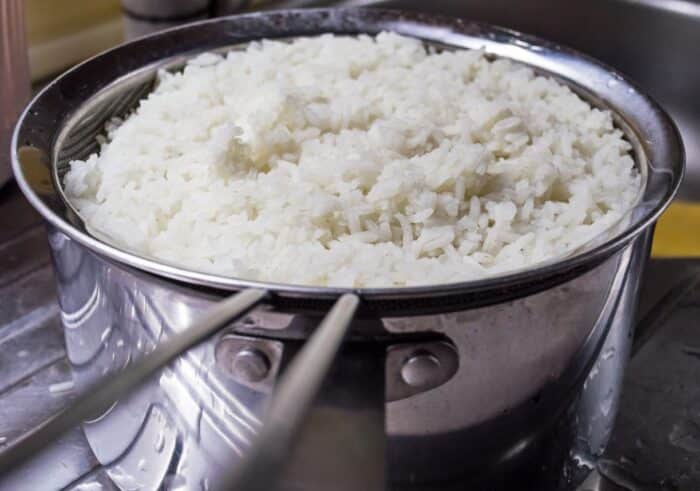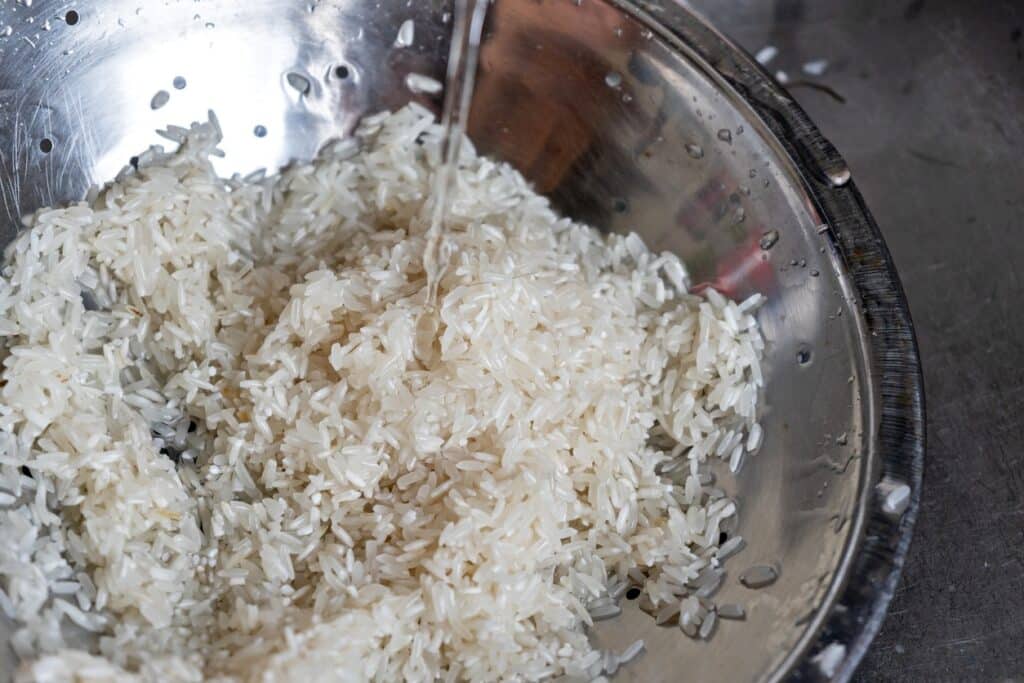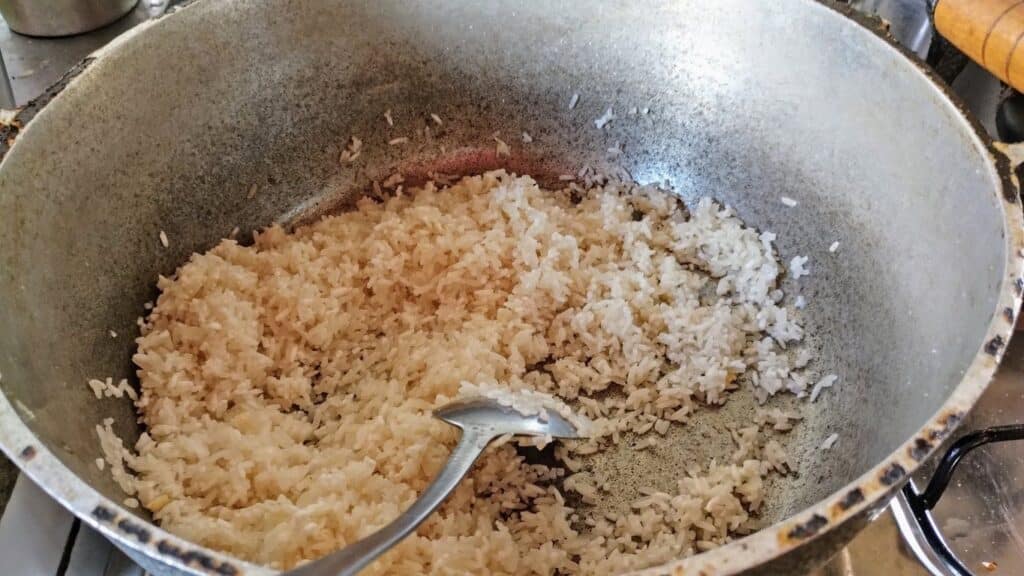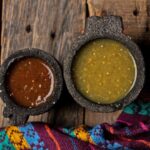How to Make White Rice Perfectly Every Time: Adios Soggy Arroz
- March 2024
- By Kim Caviness
- Recipe from Everywhere Latino


Making white rice, if I am honest, has always made me nervous. That’s a big problem because arroz blanco is essential to Latino cuisine, and I cook a lot of it here at Familia Kitchen.
I follow my Puerto Rican mom’s rice-making instructions to the letter, I swear. Still — argh! — half the time my arroz blanco comes out perfectly steamed, firm and delicioso. But the other half the rice turns out awful: Soggy, wet, ruined. So frustrating. And I never could figure out why. I used the same formula every single time.
And that was the problem, I found out.
I finally discovered what I have been doing wrong all these years, and I’m so over the moon about my new rice-making intel that I am telling everyone I know who cooks. I am also realizing that rice shame is real — and much more common than I ever imagined.
Which is why I’m sharing my light-bulb rice moment, in hopes that that it will free others from arroz anxiety, too.

The White Rice Essential Ratio You Need to Know
Here is my big mistake: I was using the wrong rice-to-water ratio. Perhaps you are too?
When Mom first taught me to make white rice in our San Juan, Puerto Rico kitchen, she passed on the classic recipe: Simmer 1 cup rice in 1 1/2 cups water with a little salt and a little olive oil, for 15 minutes, covered. When the 15 minutes are up, turn off the burner and under no circumstances was I to lift the lid, she ordered. Let the covered pot sit for 10 more minutes, so the steam in the pot can finish cooking the rice to fluffy perfection.
Easy, right? It is a great recipe. It works! When I cook just 1 cup rice, it always comes out delicioso and exactly as expected.
My aha arroz moment this past week happened when I finally connected the dots: My white rice always fails when I double or triple the recipe. Because — and here is the one thing you need to remember from this article — the rice to water ratio is actually 1:1 + 1 inch water.
In other words: 1 cup rice + 1 cup water + 1 inch extra water to cover (for steaming).
I used to make rice in a 1:1.5 ratio, and that was the source of all my arroz fails.
For those of you who may be (like me: hi) mathphobes, does this make sense? If not, here is another way of saying what I did wrong. When I was doubling and tripling my rice quantity, I was also doubling and tripling the amount of water. So I’d make 2 cups rice and add 3 cups water, following the (wrong) 1 to 1.5 rule. What did I get? A soggy, tasteless, wet mess. Because I was 2x-ing the ratio and using way too much water.
The right way: I should have been 1-xing the ratio. I should have used 2 cups of rice, 2 cups of water, and only 1 extra inch of water to create steam. Things got even worse when I tried to cook 3 cups of rice and added 4 1/2 cups of water. Triple disaster.
So, now you know, if you didn’t already. To make arroz blanco that is foolproof, steaming-hot, beautiful, delicioso, always fluffy, and never soggy or dry, keep the rice to water equation: 1:1 + 1 extra inch of water.
P.S. That part about the 1 extra inch of water for steaming also never varies. If you make 4 cups of rice and 4 cups of water, you still only need just 1 extra inch of water for steaming (not 4 extra inches!).
The ratio stays the same no matter the quantity you make:
• Use 1 cup of water for 1 cup of rice + 1 inch of water
• Use 2 cups of water for 2 cups of rice + 1 inch of water
• Use 3 cups of water for 3 cups of rice + 1 inch of water
And so on. Happy rice making, mundo.
One More Tip: An Abuela Cooking Trick to Measure 1 Inch of Rice Water
Wait, are you unsure about that 1 extra inch of water? Here’s the deal: Before cooking, when you have the rinsed rice sitting in the 1:1 equal amount of water in your pot, you still need to raise the water level another 1 inch above the top of the rice so that you have enough extra H20 to create the steam required for the last step in cooking rice.
But how do you do that? It can’t be an exact measurement, since everyone’s pot or pan is a different size, right? Right.
So, here’s how, thanks to this proven abuela-cooking rice measurement trick. Stick your index finger into the pot so that it touches the top of the rice level in the water and rice mixture. Slowly add enough water so that the liquid level reaches the top line in the first knuckle of your finger. That’s pretty close to 1 inch, as just about every abuela cocinera knows.
No measuring spoon needed, ever.
No more rice failures for you or me. Keep things 1:1 + that 1 extra inch of water for steaming and you’re on your way to say adios to arroz failure forever. You can now confidently trust that you will make a perfect pot of steaming-hot, fluffy, light rice. Every. Single. Time.
Doesn’t that sound so soothing and rice-nice?

Find more abuela-cooking 101 tips at Familia Kitchen here.
MoreLike This









Got a question or suggestion?
Please rate this recipe and leave any tips, substitutions, or Qs you have!